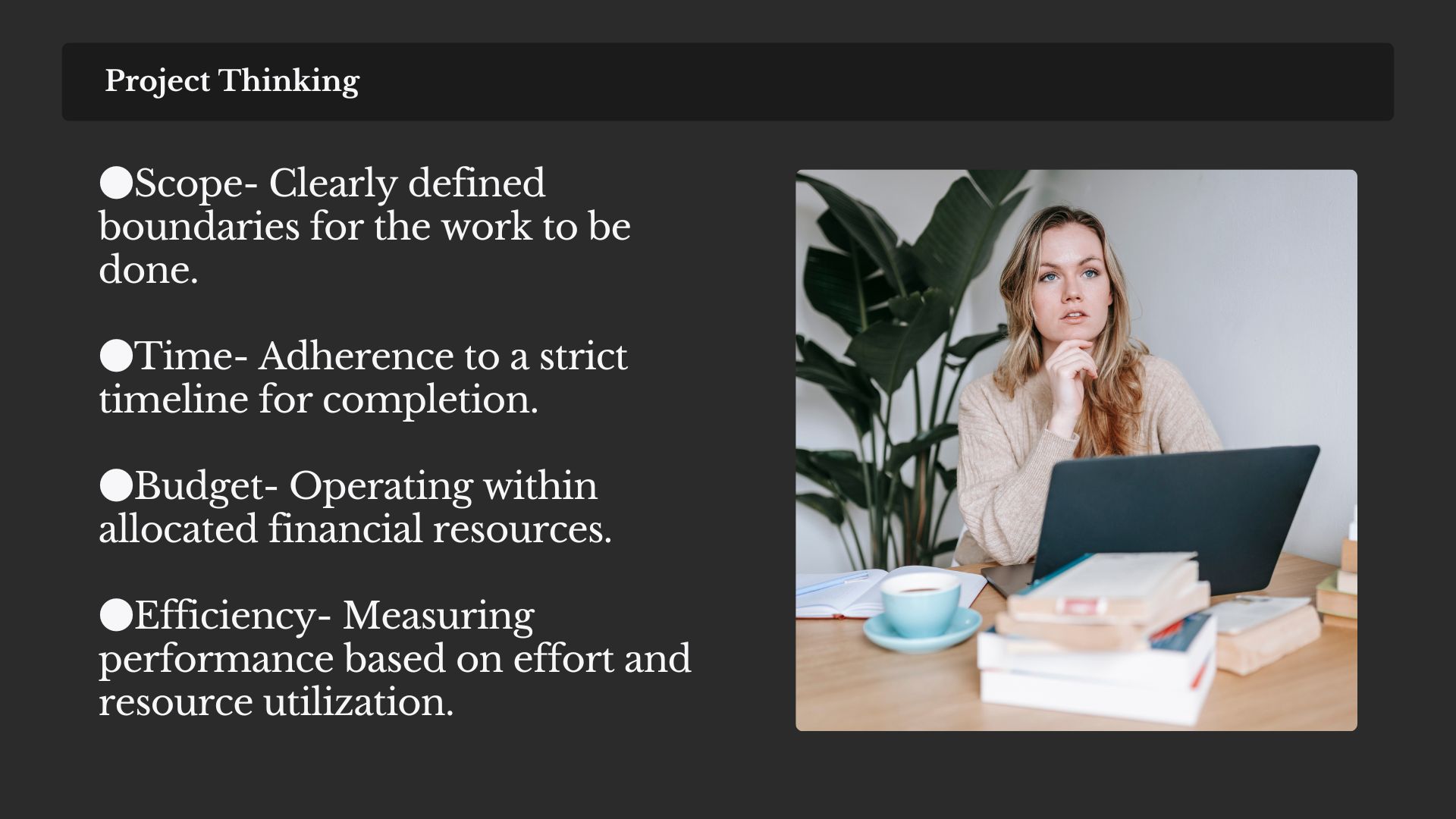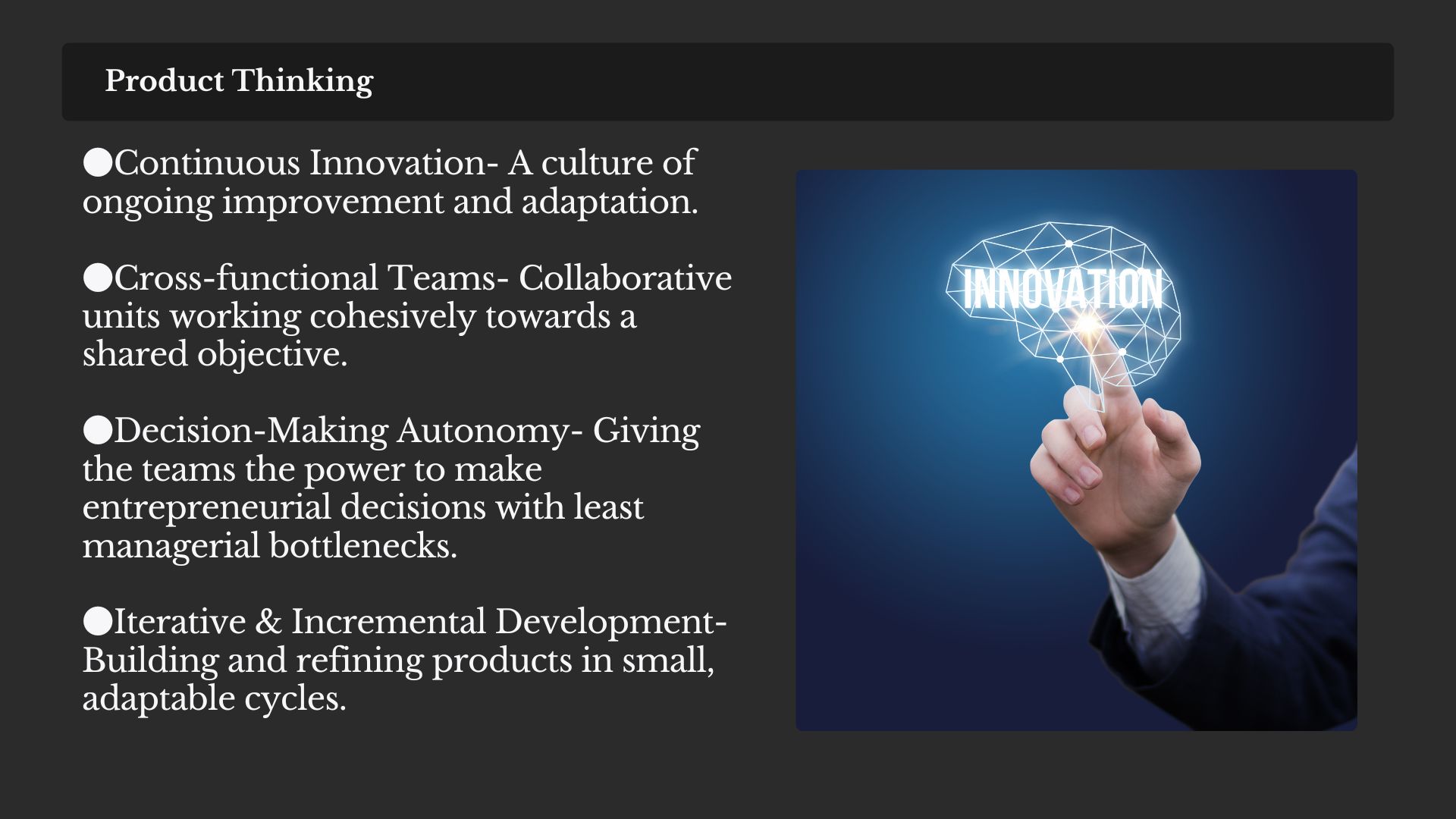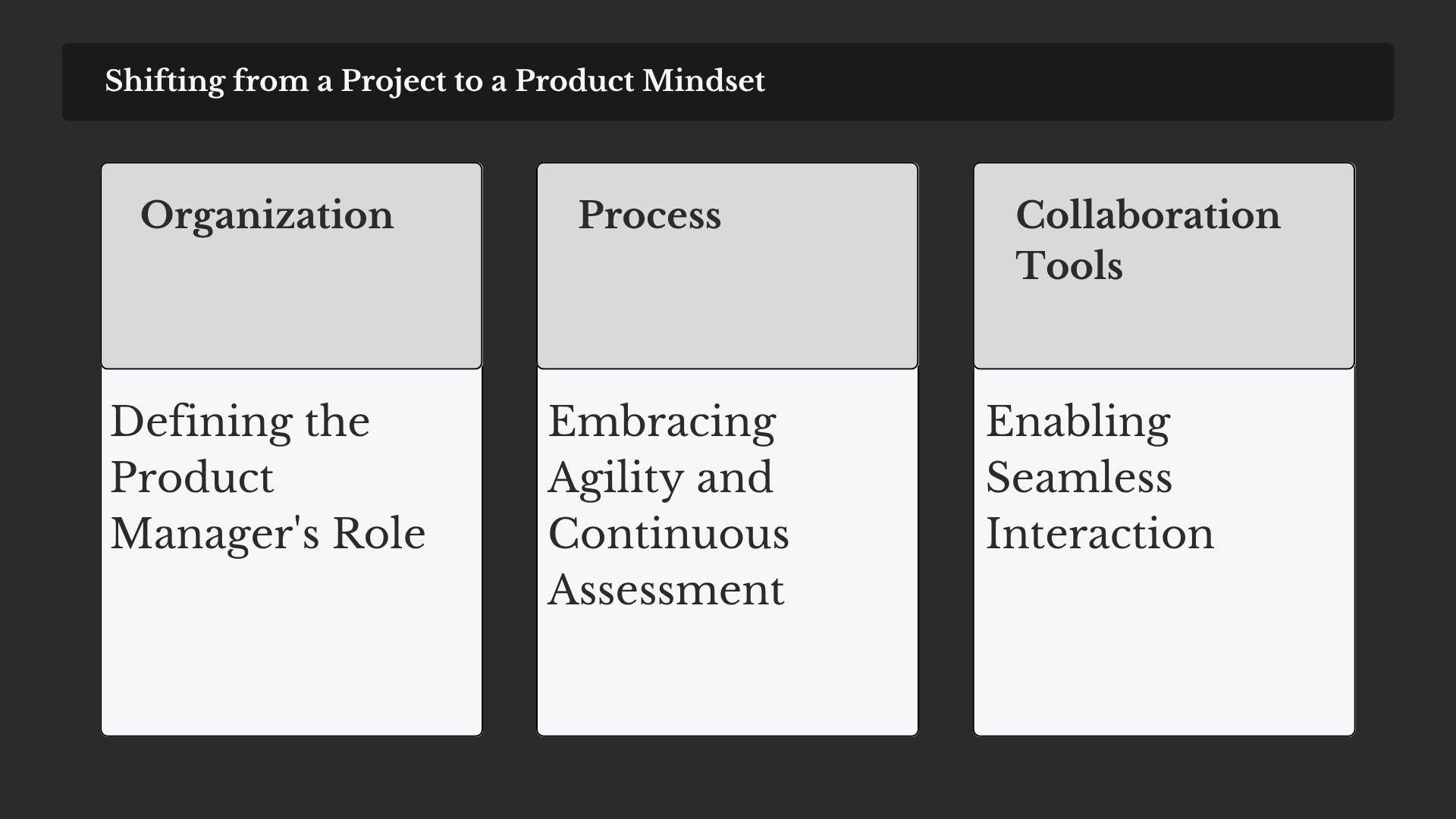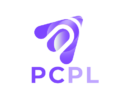
The Shift from Project to Product Thinking
Product development is getting harder with new tech emerging constantly, and teams spreading across the globe. To build great products, every part of the development process needs careful management, and fresh ideas need nurturing.
Today’s market demands that product teams move past old-fashioned, project-focused thinking. Instead, they need to embrace a product-based approach that prioritizes creating truly transformative products.
A View into The Project vs. Product Mindset
Both project management and product management are important for building successful products. Project management handles the “how”, the processes, logistics, budgets, and resources needed to get things done. It’s about efficiency and getting a product to market effectively.
However, a purely project-focused mindset can sometimes overshadow the most important element- the product itself.
A product mindset shifts the focus back to the “what” and “why.” It prioritizes main factors for product success, like creativity, understanding customer needs, and innovation. While a project mindset focuses on timely and cost-effective delivery, a product mindset also asks- will this product actually perform well in the market?
With a product-based approach, teams become more agile and feel empowered to make the product the best it can be. For example, in a project-based setup, requesting product changes can involve a lengthy approval process. On the contrary, a product-based mindset understands that change and continuous assessment are part of the journey to a successful outcome. From a broader perspective, a temporary delay in development is far better than launching a product that fails to deliver value to your target customers.
Differences Between Project and Product
The distinction between project and product thinking is important in IT, impacting how organizations deliver value and adapt to change.
Project Thinking
Focused on Delivery- An IT project management mindset prioritizes the delivery of a specific, pre-defined result, often tied to a contract or a fixed set of requirements. Its core elements revolve around the following-

While effective for discrete tasks, a purely project-centric approach can fall short in dynamic environments. Even perfectly executed projects may quickly become obsolete without continuous adaptation.
Product Thinking
Focused on Sustainable Value In contrast, product thinking adopts a broader, long-term perspective, aiming for sustained success and value creation for users or clients. It acknowledges that markets are constantly evolving, and thus, products require ongoing refinement and innovation.
Agility in Action- Lessons from the Pandemic
The COVID-19 pandemic highlighted the importance of product thinking. Many Internet companies demonstrated remarkable resilience and innovation during this period. This rapid, effective response was a result of several factors inherent in a product-focused approach.

The Pitfalls of Project-Centric IT Departments
Unfortunately, many IT departments still operate predominantly with a project mindset, often functioning as isolated internal entities. This often leads to
- Rigid adherence to budget control and KPIs- Prioritizing financial metrics and staff utilization over actual value creation.
- Incohesive work specialization- Fragmented efforts lacking a unified product vision.
- Excessive leadership review- Bureaucratic processes that stifle agility.
While tracking activities and budgets provides a superficial sense of security, it can be detrimental in a world demanding constant innovation and rapid response to change. True success lies in promoting a product-oriented culture that prioritizes continuous value delivery and adaptability.
Shifting from a Project to a Product Mindset
Shifting from a project-centric approach to a product-driven one requires a fundamental shift in the way organizations operate. This transformation depends on three key areas- organization, process, and collaboration tools.

Organization- Defining the Product Manager’s Role
To successfully transition, an organization must clearly define and empower the role of a product manager. This means recognizing the multifaceted nature of this position, which demands skills in areas like marketing, precise forecasting, and engineering. Organizations need to actively invest in developing product managers and create an environment where they have the authority and resources to create truly transformative products.
Process- Embracing Agility and Continuous Assessment
A product-based approach succeeds on an agile process. This means continuously assessing products and handling any changes or unexpected issues in a cost and time-efficient manner. For example, implementing frequent product checkpoints allows teams to monitor progress closely. This ensures that necessary product changes or updates can be made promptly, guiding the product toward a more valuable state. The most challenging aspect of this shift is often adjusting to a more flexible operational style. From high-level strategy to day-to-day tactics, product-focused teams must be adaptable enough to adjust roadmaps based on evolving market needs.
Collaboration Tools- Enabling Seamless Interaction
Seamless collaboration is important for a product-focused mindset. In an agile, product-driven environment, having the right collaboration tools in place is essential for frequent and effortless communication. Organizations must establish a robust technology infrastructure that fully supports an agile model of product development, ensuring teams can work together efficiently and effectively.
The Future of Product Development
We now have the opportunity to streamline logistical processes, automating and optimizing tedious project-based tasks. This frees up valuable time, allowing teams to fully maximize a product’s potential.
To stay ahead and create truly transformative products, development teams must adopt a product-focused mindset. This means prioritizing creativity, in-depth customer needs assessment, and groundbreaking innovation above all else.
The Product-Centric Future of Development
The way we develop products is evolving in this increasingly advanced and fast-paced world. We can free up significant time by automating and optimizing logistical, project-based tasks. This allows product teams to redirect their energy toward truly maximizing product potential.
To remain at the forefront of innovation, product teams should fundamentally shift their focus. A product-centric approach emphasizes on creativity, a deep understanding of customer needs, and relentless innovation at the core of their efforts.
Why Product Focus is Key to Future Development
The accelerating pace of technological advancement presents a unique opportunity in product development. We can now automate and optimize the laborious logistical aspects of projects, freeing up time. This reclaimed time can then be dedicated to unlocking a product’s full potential.
For product teams to continue developing transformative solutions, a mindset shift is required. When they become more product-focused, they can increase creativity, thorough customer needs assessment, and bold innovation as their primary drivers.
References
https://www.thoughtworks.com/en-in/insights/blog/shift-it-projects-products-part-1-what-product
